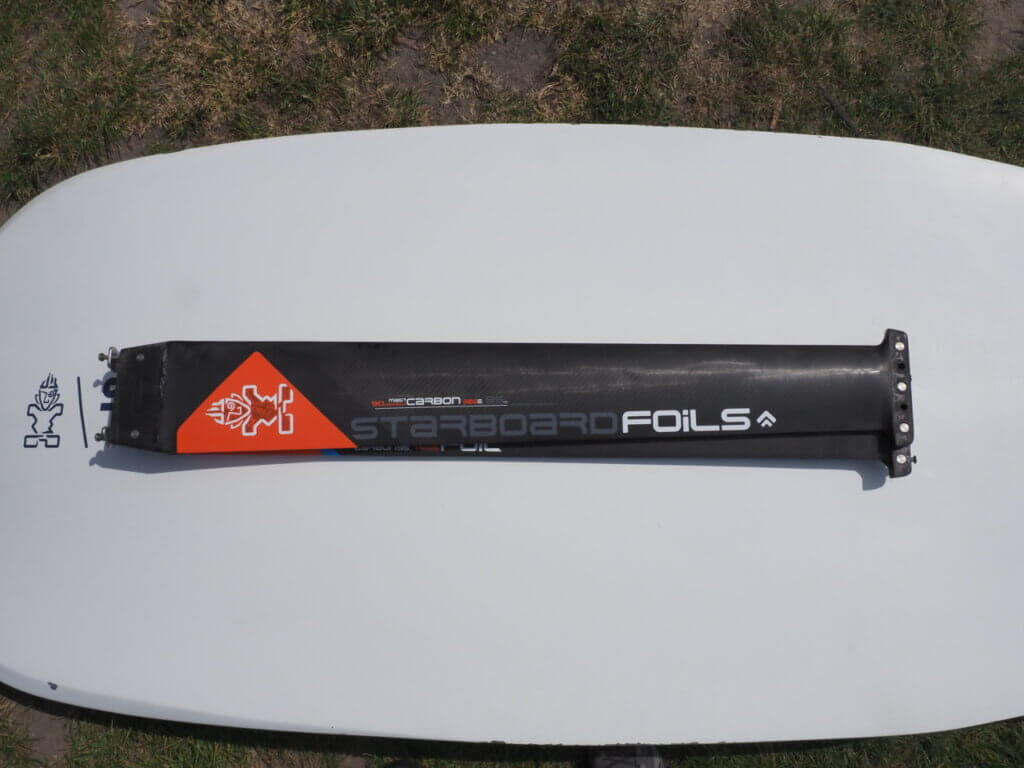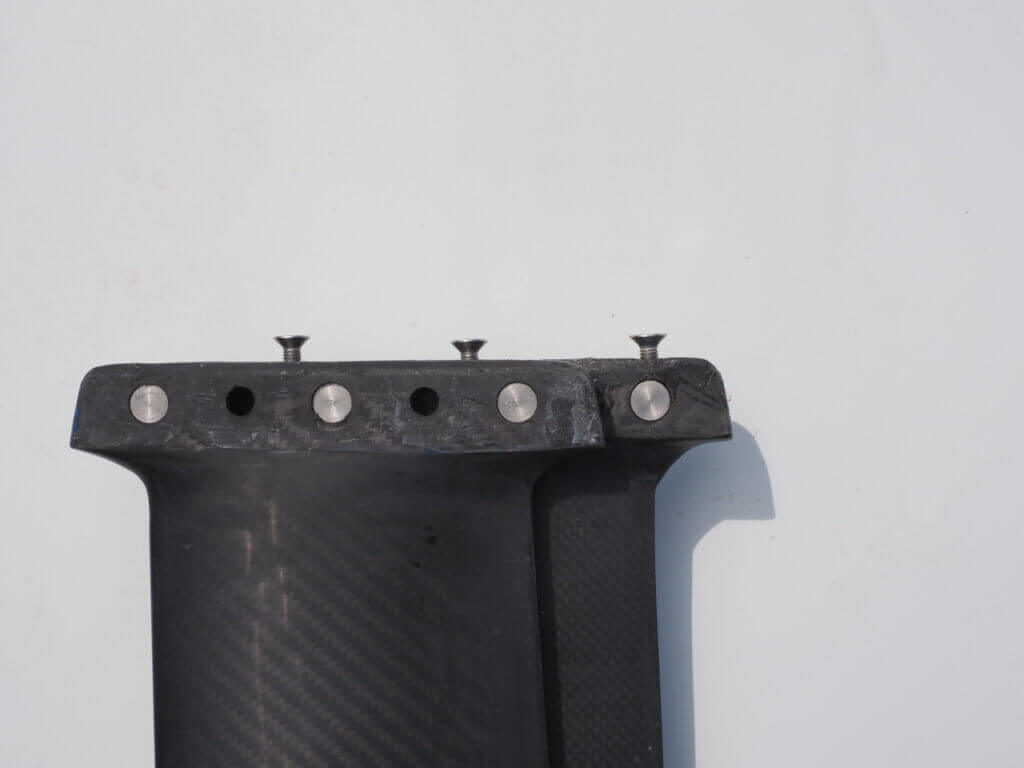Despite the fact that the Starboard IQfoil has pretty much become the standard, the development in the racing segment continues at Starboard. For the ultimate racers who want the best of the best in the open classes, Starboard now has the Formula Evo race foil. We went out on the water to find out what this Starboard Formula Evo race foil is different and added.
Price € 2.699,- | Carbon mast 95 cm C400 90 degrees | Front wing EVO 1000 cm2 | Back wing 255-2 | Fuselage 115 cm EVO
Just to start with the specs. The IQfoil carbon mast is made of C400 carbon. This makes this mast a lot stiffer than the standard carbon mast (C300). This mast is also made of C400 carbon. However, the angle of the mast (measured from the rear of the mast) is 90 degrees instead of 87 degrees of the IQfoil carbon mast and the standard C300 carbon mast. As a result, the fuselage is 4.2 cm further forward compared to IQfoil mast. The rake of the fuselage (the position of the fuselage in relation to the bottom of the board) is the same as the IQfoil mast at approx + 1.2 degrees.
Because the fuselage is 4.2 cm further forward compared to the board, the wings are also the same distance further forward, so that the ‘lift point’ is further forward. In addition, the new Evolution 1,000 cm2 front wing is supplied with this foil. So the combination of a rigid mast, blades that are further forward and a large front wing make this an ultimate light weather racing cannon. The price of € 2.699,- is a lot higher compared to the IQfoil carbon foil


Getting used to more lift
With a knot or 8 we go on the water with the IQfoil 95 and the HGO 9.0m2 . We start with the 0 degree back wing spacer. It is immediately noticeable that the board plans much faster and therefore also rises very quickly. With a good pumping technique it is possible to get into plané with about 1 knot less and to go into the air compared to. Iqfoil carbon mat.
Once in the air, we have to get used to the new balance point. It is very clear to notice that the wings are further forward. We need to hang forward a lot more. And we have to trim the sail flatter.
Certainly upwind this foil goes higher on the wind and in wind dips we can hold the altitude much longer and we keep power longer to stay in the air. Down wind we also have more power so that we can wind foil deeper down wind. Certainly up to about 12 knots, this foil up and down wind is clearly better than the IQfoil. If the wind blows harder then not only is the resistance of the large front wing what will play up, there will clearly be more effort to keep the lift under control and then the IQfoil is really faster and will be due to a better VMC (Velocity Made Good) rather be at the top buoy. If you want to keep up with the IQfoil, you clearly have to mount a smaller front wing.
The hijacking also takes some getting used to. Here, too, we have to find a balance again in order to keep things under control. In addition, we notice that turning is less easy than with the 87 degree mast. This is because the wingset is further forward, making the pivot point different.
Half wind difficult to control
During an IQfoil slalom training with about 9-11 knots we tried to hook up. we were half wind full overpowered with way too much lift (weight about 80 kg). The speed was therefore significantly lower than the boys with the IQfoil, in addition, the hijacking was clearly less easy / fast than the boys on the IQfoil.
Starboard Formula foil for especially low wind
The more hours we make with this foil, the more we get used to the new balance point and the extra lift. With course races (up and down wind) we really make the difference with this foil up to about 12 knots. If we want to be able to come along with more wind, we have to mount a smaller front wing.
On average, we use a spacer that is a 1/2 degree less than I would normally use with the IQfoil 87 degree mast (apart from the front wing that is on it). Preferably we use the 0 degree spacer. The + 0.5 degree spacer is only effective for us up to about 9 to 10 knots, above that it is simply too much.
Half wind foiling with this foil is absolutely not effective, in itself no problem since in the format of Formula racing there are actually never half windy races in the track.
The heading says it all, the Starboard Formula Evo wind foil is superior to about 12 knots, above that you can not escape a smaller front wing and perhaps a set up with the IQfoil 87 degree mast is more effective.
Use a wide board of at least 95 cm
The Starboard Formula race foil is only suitable under a dedicated racing foil of at least 95 such as the IQfoil 95, the Starboard Race 100 or FMX Hyperion 214. With a narrower board, this wind foil will not come into its own and the rider will be busy controlling the lift.
Who is this foil suitable for?
- The (formula) racer who foils competitions in the open classes
- Race oriented foilers that usually foil in areas with very little wind
- For heavier (> 90 kg) race oriented foilers can probably benefit here in a wider wind range than we with 80 kg


